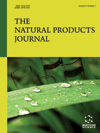
Full text loading...
Natural products have evolved to interact with specific protein targets within cells, making them valuable for various biological functions. Chemical proteomics, specifically the use of covalently linked probes in live cells, allows for the identification of protein-binding partners or targets of small molecules. Recent advancements in target identification of natural products have utilized affinity-based probes and photo-affinity labeling techniques, enabling the capture of potential cellular targets even when the interaction is reversible. This knowledge can aid in understanding molecular pathways and developing new therapeutics for diseases lacking treatment options. Several methods, including DARTS, SPROX, CETSA, TPP, and bioinformatics-based analysis, are employed for target identification of label-free natural products. Chemical probe design and synthesis are tailored to screen targets of molecules with diverse structures. The comprehensive proteomic analysis reported herein aims to investigate target sites contributing to biologically significant effects, considering both desirable phenotypes and potential toxicity or side effects.

Article metrics loading...

Full text loading...
References


Data & Media loading...

